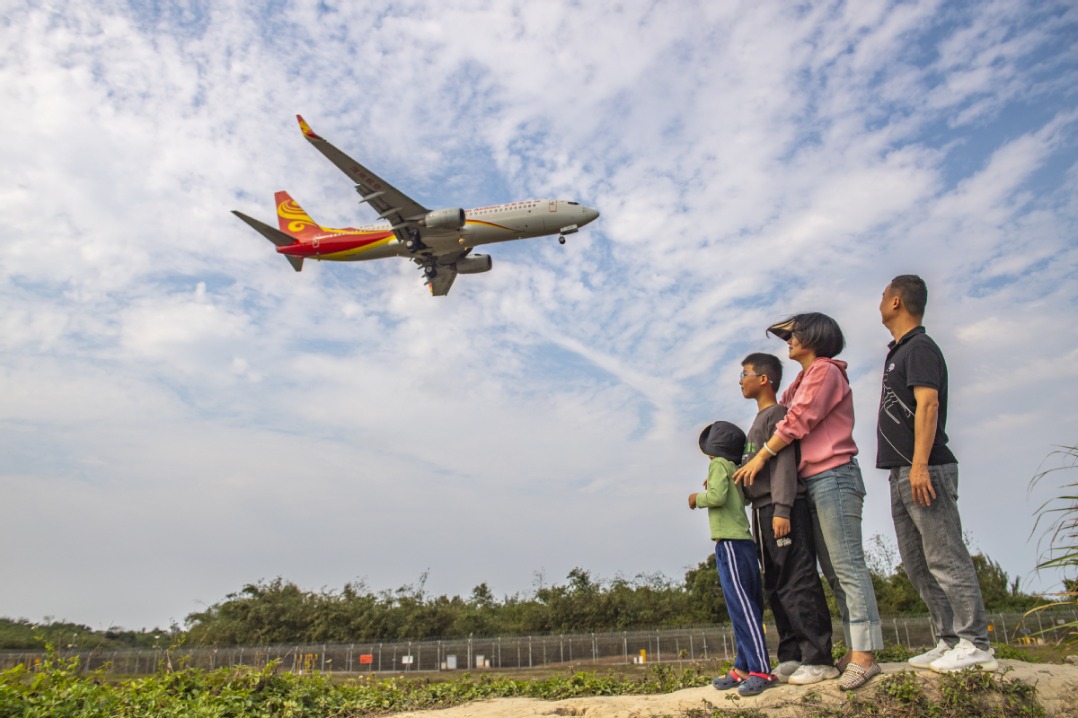Strength in numbers
More BRICS members mean more development funds and more demands for local currency settlement, deeper monetary cooperation and a broader integrated market


Since its inception, the BRICS cooperation mechanism has made significant progress both in terms of managing external relations as a collective force and internal cooperation.
On the one hand, upholding the interests of emerging markets and developing countries, BRICS advocates for reform of the unjust and unreasonable global governance system. BRICS members have strengthened coordination on major international and regional issues, expressed objective and fair collective positions, and proposed solutions and countermeasures different from those of Western developed countries.
On the other hand, BRICS countries have continuously enhanced internal cooperation across a wide range of economic, social and cultural areas. Among them, economic cooperation and joint development, which are the purpose and priority of BRICS cooperation, show the greatest potential, most diversity and best results.
First, a comprehensive and multi-layer economic cooperation mechanism has been established among BRICS countries to support practical cooperation.
Centered on the leaders' summit, BRICS countries have formed a regular meeting mechanism comprising over 30 ministerial meetings and 60 working groups to discuss, decide and advance cooperation in various fields. Relevant departments of BRICS countries have maintained stable and close contact to exchange concerns and positions, as well as share policies, best practices and experiences.
Based on the broadest common ground among them, BRICS countries have developed a series of consensus, cooperation frameworks, road maps and action plans. Corresponding actions are pledged and implemented on a voluntary basis at the national level, in full respect of the economic sovereignty of member states. In 2015 and 2020, BRICS countries set out five-year plans for BRICS economic and trade cooperation, which defined the cooperation framework and priority areas for the partnership.
BRICS has set up several platforms and entities to promote day-to-day cooperation. For example, China established the BRICS Partnership on New Industrial Revolution Innovation Center and the China-BRICS Science and Innovation Incubation Park for the New Era in Xiamen, as well as the BRICS Future Network Research Institute in Shenzhen.
Besides, BRICS countries have held regular business forums and council meetings and launched the BRICS Women's Business Alliance to promote direct dialogue and collaborations among companies and business groups.
Second, BRICS countries continuously enrich economic cooperation based on global trends and their own needs.
Energy, agriculture, industrial development and the digital economy are the focus areas of BRICS cooperation. Energy cooperation includes encouraging companies to jointly develop technologies and equipment to drive efficiency; establishing energy research platforms for joint research in energy cooperation and efficiency; stepping up supply chain cooperation and investment to support energy transition; and consulting on energy-related global hot topics to safeguard BRICS countries' interests.
Agricultural cooperation under the BRICS framework prioritizes strengthened cooperation in food security, with the focus on agricultural technology innovation, the impact of climate change on agriculture and food security, and promoting trade and investment in the sector.
Industrial cooperation began with manufacturing and mineral processing. Later, more efforts were made to reinforce cooperation under the framework of the BRICS Partnership on New Industrial Revolution.
Since 2020, BRICS countries have prioritized the digital economy as a key area of cooperation and they have proposed establishing a digital economy partnership. Artificial intelligence was added to this cooperation agenda in 2023.
Third, unlike binding custom unions or free trade areas or bilateral cooperation, BRICS countries have created a new model of multilateral economic cooperation.
Under the new model, BRICS countries have strengthened their policy coordination and strategic alignment, exchanged views and communicated positions on issues of common concern, formed consensuses and frameworks, and encouraged the implementation of cooperation commitment through demonstration and pilot projects by member states.
Moreover, to promote information exchanges, BRICS countries have set up databases and conducted joint research to enhance understanding, explore areas of mutual interest and cultivate cooperation opportunities. They have also been sharing experiences, best practices and solutions to provide references for solving each other's development challenges. Through standards alignment, skills exchange, capacity building and joint project implementation, they have built a network of firms to promote supply chain cooperation.
On Jan 1 2024, BRICS exercised its largest expansion in history by admitting five new members — Saudi Arabia, Egypt, the United Arab Emirates, Iran and Ethiopia. With the new members have come new funds, technology, resources, markets and experiences, which have further enhanced economic complementarity within the group. Stronger internal economic cooperation among BRICS members will further reduce dependence on developed countries and explore new models for the sustainable rise of developing countries and emerging economies.
After the expansion, more members will join the leaders' summit, ministerial meetings, and working group meetings, creating a broader multilateral platform for member states to resolve their differences and ease tensions, strengthen identity recognition and mutual encouragement. The flexibility of the BRICS cooperation mechanism allows new member states to quickly participate in cooperation after joining it.
Agriculture and energy continue to be the focus areas of economic cooperation after BRICS' expansion. The expanded bloc includes major exporters and importers of agricultural products, as well as providers of agricultural technology and development solutions. The pairing will accelerate the transfer of agricultural technology, promote experience sharing, foster closer agricultural trade and investment, balance supply and demand of agricultural products, and enhance food security through cooperation.
In the energy sector, the inclusion of Middle Eastern oil producers will ensure more stable supplies to BRICS countries, expand "energy plus" cooperation and accelerate energy transition.
With strong aspirations for industrial transformation and economic diversification, the new BRICS members are expected to actively participate in the BRICS Partnership on New Industrial Revolution cooperation and leverage the complementary advantages of funds, technology, labor, and markets of the group. BRICS countries will have a more stable and diversified supply of critical minerals to support the new industrial development. With more funds for development and more demands for local currency settlement and monetary reform, there will be deepened financial and monetary cooperation and a broader integrated market. Micro, small and medium-sized enterprises will have more opportunities to collaborate and help build more resilient industry and supply chains.

The author is deputy director and a senior research fellow at the Institute of West Asian and African Studies at the Chinese Academy of International Trade and Economic Cooperation, Ministry of Commerce. The author contributed this article to China Watch, a think tank powered by China Daily.
Contact the editor at editor@chinawatch.cn.


































